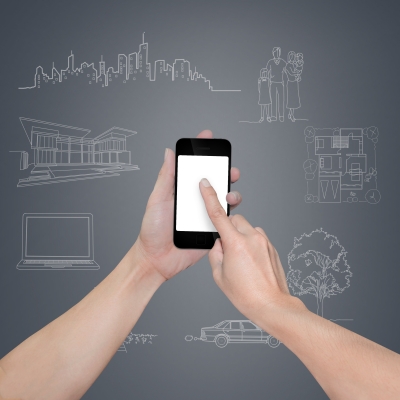Apple’s integrated system will make it easier to set up and control new “smart home” devices. For example, a home’s lights might automatically come on when the owner enters the house, using their iPhone to wirelessly signal their arrival. Such a system was outlined in an Apple patent filing, published in November last year. – Financial Times
You may be aware of the Big A planning to turn the iPhone into a remote for your lights, security and other appliances. Of course, as we’re all abundantly aware lately, it’s not a new idea when Apple starts moving in on a market. Z Wave is an already existing protocol supported by over 250 manufacturers, including ADT, GE/Jasco, Evolve, Ingersoll-Rand, Linear, FAKRO and Sigma Designs, so it will be interesting to see if Apple follows suit or at least makes its app Z Wave compatible. More interesting will be to see how far Apple’s Homekit will be integrated to existing protocols. There has been some success making a demonstrable Z-Wave bridge, but that has come from outside the company. Based on past developments, Apple doesn’t really care too much about what other people have done, or what early adopters of Z-Wave, Insteon or Zigbee would like to see. They will do what is mass marketable.
There are alternatives coming from the startup community. SmartThings has produced an integrated hub that connects disparate protocols and allows you to manage them through an app (so it doesn’t matter if your heating is on Z-Wave and your lights are on Insteon). There are others like CTRL X Technology, which is in the crowd funding stage. What we believe Apple will be going for is taking the concept of smart appliances and then making the broader market aware of it through its huge media presence. Outside the tech world, smart appliances are a fairly new idea. If Apple makes the big wave and formulates standards of manufacturing that Zanussi and Hotpoint can easily apply to their products, it will dominate. It won’t be the best, and it won’t be the cheapest, but that’s the nature of the beast.
Insteon is working with Microsoft to make home device integration a voice-operated affair. Right now, the drawbacks are that Insteon compatible appliances are supported, although there are plans to integrate Siri command as well (although, there is no date for that, so apply as many pinches of salt as you think are necessary). However, this does illuminate where we might be going in Internet of Things terms. If we’re already seeing the cross protocol integration of hubs, surely the next step will be the further integration of wearable technology to control the smart home appliances in your house. In fact, it may be that wearable tech is the other side to the coin here. Imagine an app for the iWatch that turns on lights, starts a playlist or turns your heating on in winter just by you walking in the room. This is already possible with Bluetooth LE and a tablet, but it’s that little extra step of integration that we believe will make home device integration a truly ubiquitous concept.
Let us know in the comments what you think the future holds for smart home appliances. Do you have a new tech solution for home integration? Venture Aviator will help you get it off the ground. Drop us a line to talk about the future.
Click here to tell us about your project
Related Post: Five Things You Need to Know About Chatbot Apps
Related Post: How to Build a Million Dollar App

